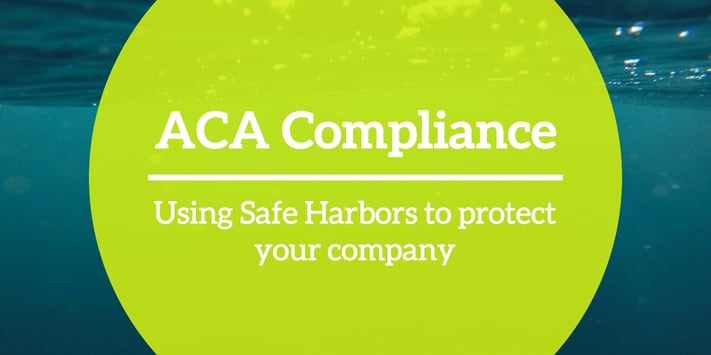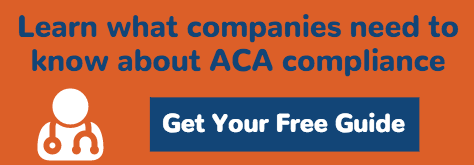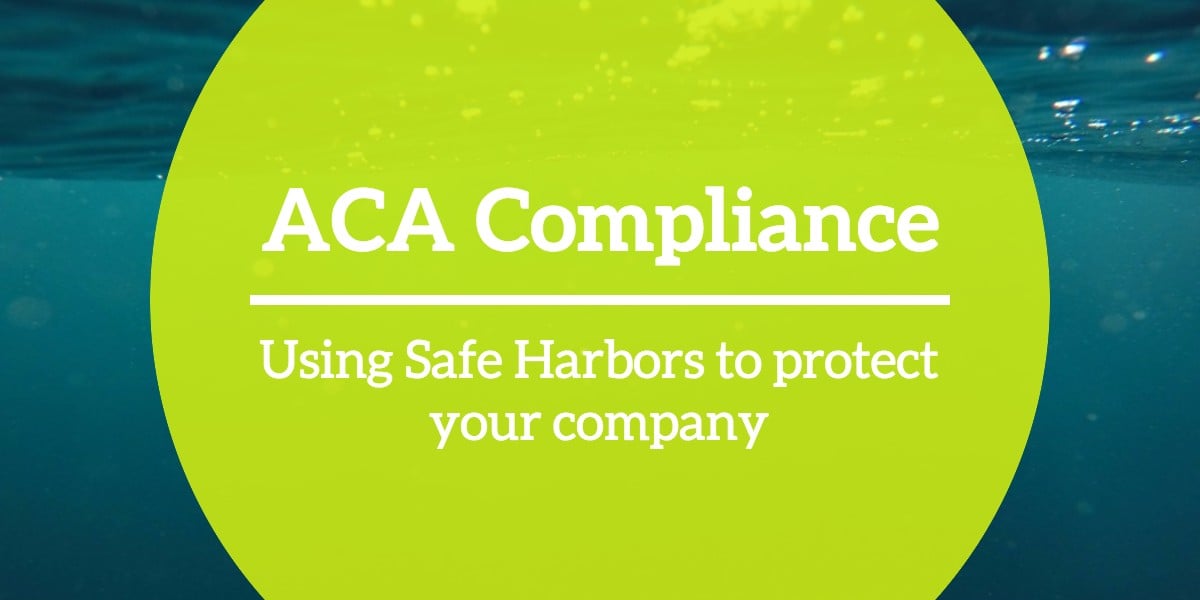
As of the beginning of 2016, your company is responsible for proving compliance with the Affordable Care Act. This means that you’re providing health insurance with a 60% minimum value to substantially all (95%) of your employees.
But just providing any insurance plan for your employees to join is not enough; it has to meet strict affordability requirements. What’s affordable for one employee may not be affordable for all, so the dollar amount each employee contributes for their insurance premiums can vary. The least expensive option offered (for employee-only coverage) should not exceed 9.5% of an employee's’ household income in order to be compliant.
This is where things can get cloudy. There are all kinds of factors that can make an employee’s total annual household income unknown: spouse’s income, variable number of hours, pre-tax contributions, etc.
Enter the three safe harbors. They help you ensure that the insurance coverage you’re offering to employees will be considered affordable, protecting your company from penalties.
What are the three types of safe harbors?
W2 Wages Safe Harbor
Overview: This is based on box 1 of an employee’s W-2 form. If the employee’s insurance premium costs are no more than 9.5% of this number, your plan is compliant. This is a good fit for an employer with a stable workforce of regular full-time salaried employees who work 40-hour weeks, and whose income is unlikely to decrease throughout the year.
Advantages: This safe harbor will generally result in higher monthly premium affordability amount, meaning the employer’s share might be less expensive.
Disadvantages: This doesn’t include any pre-tax contributions the employee may make toward a 401(k) or cafeteria plan. This means that two different employees with the same salary may have different maximum affordable amounts.
This safe harbor also requires calculating coverage affordability for each employee individually, and will have to be calculated each month if an employee’s income varies by month. These factors make this safe harbor more administratively onerous.
Rate of Pay Safe Harbor
Overview: Plan affordability is calculated by multiplying an employee’s lowest hourly pay during the month by 130 hours. If the lowest-cost insurance plan offered is no more than 9.5% of that number, your coverage is compliant.
Advantages: This is a good option if you need a fast and “fail-safe” compliance check. If you’re compliant for the lowest-paid employee, you’re compliant for your whole workforce.
Disadvantages: This doesn’t work for non-exempt employees if the monthly salary is reduced during any given month (due to a reduction in work hours, for example). Also, the 130 hour guideline applies across the board, even to employees who may work more than 130 hours in a month, and could therefore afford a higher cost for their insurance premium.
Federal Poverty Line Safe Harbor
Overview: This safe harbor uses the Federal Poverty Line (FPL) to determine plan affordability. If your lowest-cost, employee-only plan costs no more than 9.5% of the FPL, you’re compliant. To determine affordability, you are allowed to use the FPL in effect six months prior to the start of the plan year.
Advantages: This is an easy and fail-safe calculation. Instead of making a calculation for each employee, this can be applied to an entire workforce. Any employer who uses this safe harbor is guaranteed to be compliant.
Disadvantages: This can result in the employer paying a significantly higher share of insurance coverage, since employees will only be responsible for paying 9.5% of the FPL amount, even if their income is higher.
A final note:
It’s optional to use any of these safe harbors. You can apply different safe harbors to different categories of employees, provided that you do so consistently for all employees in a particular category.

